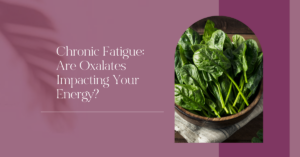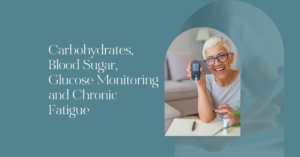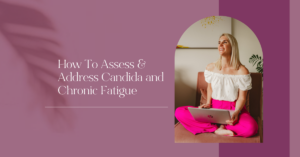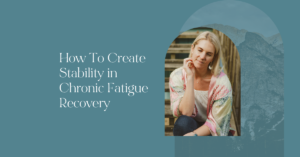Sex hormones are the volume control of the body. They can turn the volume up and down, but they cannot change the tune. Therefore, if your body is singing the tune of pain, inflammation and nervous system dysregulation, hormonal fluctuations will turn the volume up and down on these symptoms across the month.
As you work on recovery from CFS / ME or any other complex chronic conditions, the ultimate long term goal is changing the “tune” of the body to a more regulated one. Part of that process may be supporting hormone balance so that you can feel more regulated and stable across the month.
Here I discuss what can go wrong across the different phases of the menstrual cycle – follicular phase, ovulation and luteal phase – so that you can identify what support your body may need (which will be discussed in the next blog).
The Follicular Phase
The follicular phase of the cycle begins on day one of your period, when you have a significant flow i.e. not just spotting. In the follicular phase of your cycle, FSH stimulates your follicles and they produce oestrogen. An oestrogen surge is required for ovulation to take place and oestrogen builds a nice fluffy, healthy endometrium, preparing the uterus for implantation of a fertilised egg.
Things that can go wrong in the follicular phase:
FSH (high or Low): Low FSH can be observed in, but is not limited to PCOS. FSH is produced by the pituitary gland in the brain after stimulation by Gonadotropin releasing hormone (GnRH) from the hypothalamus.
Low FSH is commonly found in what is known as the “Female Athlete Triad”. This triad, which includes poor bone density, amenorrhea and low calorie intake, is most often driven by an increase in stress from exercise with inadequate calories and nutrients.
You do not need to be an athlete for this concept to apply to you. Under-eating, excessive stress or both together, could all cause low FSH. Therefore, stress reduction, lifestyle balance, adequate sleep with good nutrition support, may all help FSH.
Additionally, because FSH is released by glands in the brain, consider brain health optimisation; This includes; good oxygen delivery, managing blood sugar, inflammation, stress and sleep.
High FSH is commonly observed in menopause. High FSH can indicate low ovarian reserves and ovarian aging. This would be expected in perimenopause but not necessarily in women under 40 years of age, although possible. Some women can undergo premature menopause and often this runs in families. If your mother experienced premature menopause, you likely will too.
Low Oestrogen: Low oestrogen is the likely consequence of low FSH. You need adequate oestrogen for ovulation and also to lay down a healthy endometrial lining for egg implantation. This requires good blood flow to the endometrium which requires adequate levels of B12, folate and iron for red blood cell production.
When Sex Hormone Binding Globulin (SHBG) is high, more oestrogen stays in it’s bound and inactive stage. Therefore, it may be worth asking your doctor to test your SHBG to rule this out. SHBG can be lowered by weight gain, addressing blood sugar balance, particularly if you tend towards hypoglycemia, addressing androgen levels if elevated and reducing cortisol.
Ovulation
Ovulation occurs due to a surge in oestrogen around day 12 of the average cycle. The surge in oestrogen essential for ovulation, requires energy. If energy production is poor due to dysfunctional mitochondria, this could negatively impact ovulation.
Here we must consider that mitochondria are not only energy organelles but they play an important role in defence and the orchestration of the Cell Danger Response (CDR). Therefore, an active CDR, which is common in CFS – especially if you are in a crash – could interfere with ovulation.
Ovulation is an inflammatory event where the egg bursts from its sac before it becomes the progesterone producing corpus luteum. If the body is already in a stage of chronic low grade inflammation, this can suppress hormone receptors and disrupt ovulation. If you fail to ovulate and you know that you are producing adequate oestrogen and FSH, consider low LH.
Low LH: LH, like FSH, is produced in the anterior pituitary in response to stimulation by GnRH. You can easily test your own LH production by using commercial ovulation urine test strips or a Mira device if you want a much more sophisticated approach. Start measuring from day 12 of your cycle or earlier if you have a short cycle.
Stress is one of the biggest factors that can inhibit LH production – and having a chronic fatigue condition is inherently stressful! Reproductive hormones release in a pulsatile manner and are influenced by circadian rhythm. Therefore, sleep management is a must for reducing stress and promoting ovulation.
Thyroid: One third of women who experience subfertility have a thyroid imbalance. Although falling pregnant may not be important to you right now, you still want to make sure you are ovulating.
Most doctors only test TSH, sometimes T4. I often work with clients whose doctors have never tested their T3 levels or their antibodies even when they have thyroid dysfunction. Medichecks offers a finger prick test that covers TSH, T4, T3 and Thyroid Antibodies.
Your ovaries and egg cells have thyroid hormone receptors and low thyroid function can:
- Prevent activation of the granulosa cells, which nourish the oocyte
- Disrupt GnRH which communicate with your pituitary gland which can affect LH and FSH production
- Elevate prolactin, which can increase SHBG
- Be associated with a lower ovarian reserve
Luteal Phase
Getting to the luteal phase of your cycle is dependent on the phases that come before. If all runs smoothly, the corpus luteum is produced and progesterone is generated.
If fertility and conception is a goal, progesterone has the very important role of sustaining pregnancy after fertilisation and implantation. But even if fertility is not the goal, we still need progesterone to balance oestrogen levels. If progesterone production is low the end result may be oestrogen dominance.
Oestrogen dominance is when oestrogen is high relative to progesterone. This imbalance classically underpins many hormone related conditions and symptoms such as Pre–menstrual Syndrome (PMS), Polycystic Ovarian Syndrome (PCOS), Endometriosis and Uterine Fibroids.
What is important to understand is that oestrogen dominance does not necessarily mean that oestrogen is elevated above the physiological norm, in fact, one can have low oestrogen and still be “oestrogen dominant”. This is because the term refers to the relationship between oestrogen and progesterone.
For example, oestrogen could be within a normal physiological range but progesterone may be low or at the lower end of the normal range. Alternatively, both hormones could be low but proportionally, oestrogen is much higher.
When oestrogen is the dominating hormone, periods can be:
- painful
- heavy and come with other symptoms such as;
- headaches
- water retention
- changes in bowel function
- chnages in mood
- changes in appetite and cravings
- increased fatigue
In addition to oestrogen dominance, inflammation and iodine deficiency can cause oestrogen hypersensitivity which can make your body much more sensitive to oestrogen.
Oestrogen dominance is likely to occur when there is failure to ovulate but even with healthy ovulation other factors can influence the balance of these hormones.
Oestrogen Dominance and Histamine Intolerance / Mast Cell Activation Syndrome (MCAS)
Mast Cell Activation Syndrome is a label given to individuals who experience an unregulated release of chemical mediators (cytokines, interleukins, prostaglandins and histamines) which produces a remarkable multitude of symptoms including brain fog, fatigue, anxiety, rapid heart rate and low blood pressure which may be associated with CFS and Postural tachycardia syndrome (POTS).
High oestrogen, often observed prior to ovulation and in the luteal phase of the cycle (post ovulation), stimulates mast cells and also downregulates the DAO enzyme which clears histamine from the body.
This can create a net result of a vicious cycle of oestrogen → histamine → oestrogen → histamine.
In women, this could explain a possible cyclical nature with symptoms and may be most relevant for women who feel worse at ovulation and in the second half of the cycle.
Progesterone stabilises mast cells, up-regulates DAO, and can therefore reduce histamine. Which means that supporting ovulation and healthy progesterone production may be supportive for mitigating histamine related symptoms.
However, the long-term strategy is to reduce what is triggering histamine production in the first place. This could include; medications, insect and reptile venom, fragrances, stress and nervous system dysregulation, exercise, food and alcohol, chemicals, heavy metals, sun exposure, mold spores and mycotoxins, gut infections, blood sugar imbalances.
Summary and Conclusion
The ultimate goal of a healthy cycle is to ovulate and produce well balanced amounts of progesterone and oestrogen. Failure to ovulate or poor progesterone production post-ovulation has potential to amplify or exacerbate symptoms of CFS and associated conditions e.g. Fibromyalgia, POTS etc. In the next blog I will address how we can support the body to mitigate large hormonal fluctuations and encourage smoother cycles.



